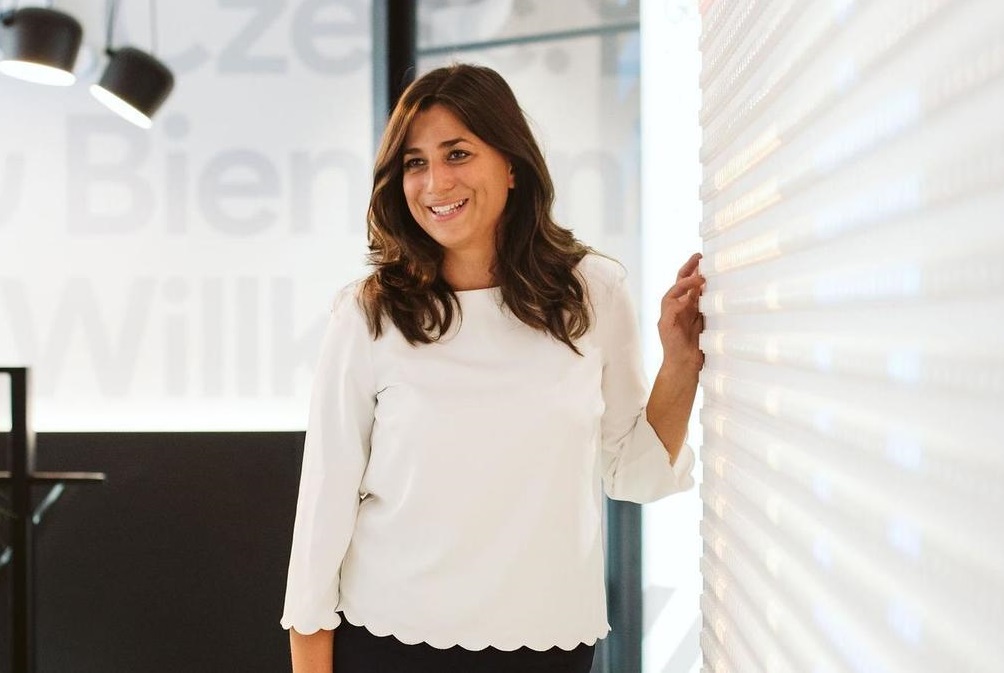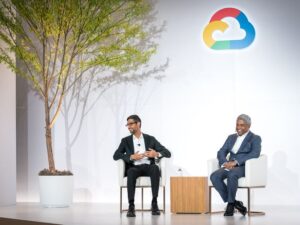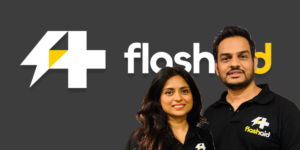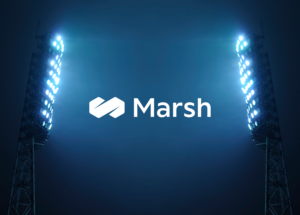After spending more than a decade in the technology industry, Anna Brailsford, an entrepreneur and successful startup founder, decided she was sick of seeing women being left behind in the space.
Today, Code First Girls has trained more than 110,000 women to work in the tech industry – and over the next five years, their goal is to hit the one million target. Already 600% oversubscribed at their current operational level, demand for their services could not be more fierce. We caught up with their busy CEO to find out more.
Launched in 2012, just as digital transformation was getting a grip on the mainstream marketplace, the organisation trains women in a variety of in-demand technical skills, and works with companies to place them in jobs that will continue to nurture their attributes and help them grow.
Indeed, the company has become the largest provider of free coding courses for women in the UK, having delivered over US$74.2 million worth of free technology education. With a 96% success rate of women moving off education into their first roles in technology, Code First Girls is boosting employability, diversity, and social mobility, actively transforming local economies and communities.
The educational programmes are flexible, free, online and take place with live tutors – and are designed with the busy lives of women in mind. Not surprisingly, the demand is huge..
An EdTech with a difference
How did it all begin? Well, as Brailsford tells it, and like all successful new ideas, Code First Girls began by its founders thinking outside the box.
“First and foremost, there’s obviously not enough women in technology,” she says. “There are lots of providers in the market. However, one thing I recognised is that there wasn’t any provider that really looked at employability. At Code First Girls, we flipped it and said, we’re going to work backwards from the jobs in the market and from the organisations themselves. We’re going to examine what those skills gaps look like over the next five years. And we’re going to build educational pipelines in specific regions, for women and underrepresented groups working backwards from those established skills gaps.”
Brailsford’s decisive thinking and clarity saw her create an economic model that was completely built around women; a model that takes into account their economic situations, their personal commitments and their employment requirements at the end of the process.
“A lot of the players in the market have not created models that are conducive for women,” she states. “They have financial barriers to entry for the actual price of the education, they involve women being tied into draconian contracts, and having their pay skimmed off.”
It’s an element she is passionate about – and she doesn’t mince her words. “First and foremost, the majority of providers in the market are not offering women practical training solutions.
“When I started to review the market and, and the way it was delivered, every single provider I could see was saying; ‘You have to give up your job in order to go through a really intensive bootcamp. You can’t be studying an alternative discipline. You couldn’t do this whilst at university. And guess what? You certainly can’t have children.’
It’s almost as though women have had to apologise for the fact that they’ve got caring responsibilities, and the fact that they don’t want to lose their sole source of income
Anna Brailsford
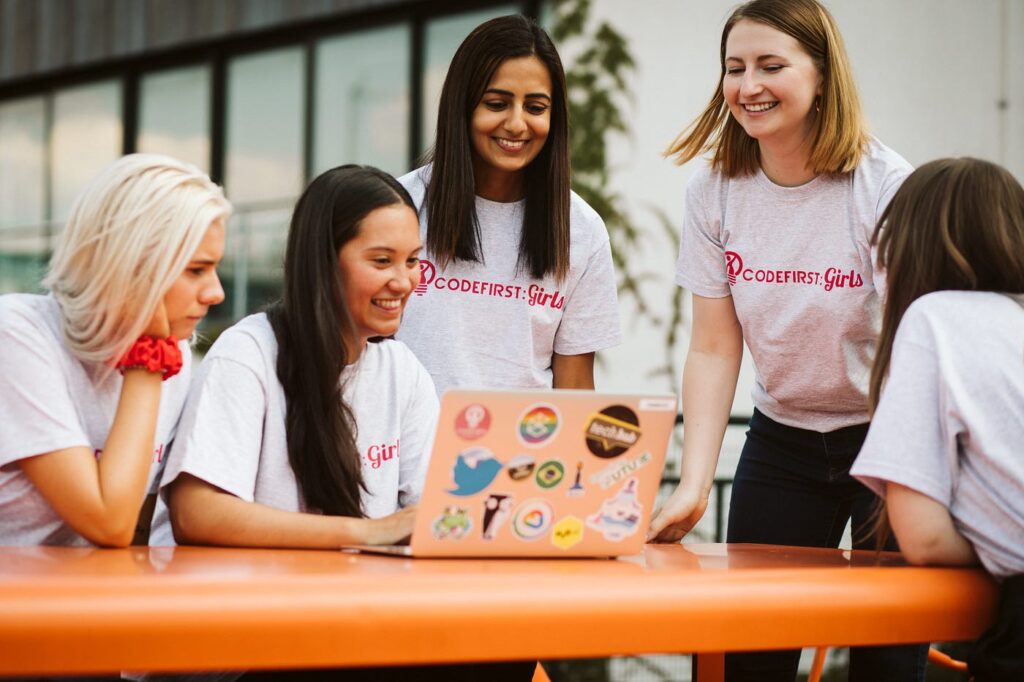
Women sidelined in tech education
It’s outrageous to think that someone in this day and age could be discriminated against educationally, simply because they have family commitments. But that’s exactly what’s been happening – a fact that clearly infuriates Brailsford. “It’s almost as though women have had to apologise for the fact that they’ve got caring responsibilities, and the fact that they don’t want to lose their sole source of income,” she says. “So, when I put together the programme, I wanted to make it as accessible as possible to support women without having to give up their income, and to enable them to say, ‘I study Humanities’, or ‘I have family commitments – and I can still do Code First Girls at the same time’.”
Brailsford worked on the basis of providing women autonomy, free education and an employment opportunity that would change their career trajectory. “I wanted them to be able to pick who that employer would be and find the best possible match for them as opposed to trying to shoehorn them quite frankly, into models that are not conducive to getting more women into tech,” she says.
“As soon as we launched that economic model, we had a very unique pipeline based on skills gaps, with all of the provision free to women.”
It’s been a massively successful endeavour and is scaling furiously to keep up with demand. “We are at a point where we’re 600% oversubscribed from eligible women that could take the jobs by targeted region.” Code First Girls now works with over 130 businesses globally – 20 finance and insurance clients including Bank of America, Goldman Sachs, Barclays, Morgan Stanley, and Aviva plus a range of clients across 20+ industries including market leaders such as Nike, Ford, Deloitte, Skyscanner and Rolls-Royce.
A unique use of data to determine demand on a global scale
By creating the Code First Girls model, Brailsford has also contributed significantly to the level of information available on candidates and skills gaps in the technology industry which contributes to a lack of diversity in companies. She says, “I worked in Edtech for well over 10 years and I was very, very aware that there was a lack of women in technology. But also I was very aware of the data sets that were available around women in tech.
“Even if you could identify candidates, even if you could map the skills gaps, even with some of the biggest data providers in the world for skills matching, the current algorithms are only going to produce the type of candidates based on the data that they have… To be perfectly frank, that’s usually white middle-class men.
“When I came to Code First Girls, what I saw was probably one of the richest data sets in the world around women in technology. The big question was how we harnessed that and how we made our education as relevant as possible for these women to actually get jobs.”
Brailsford says that broadly speaking, the figures of women working in organisations in technology represent the figures of women studying computer science at university. There’s 17% typically of women in the tech workforce, she says. “That’s the picture in both UK and the US markets, and you will see a similar picture in terms of the number of women that are actually studying computer science.”
Finding alternatives therefore, to the computer science degree is the absolute name of the game, and the aim of Code First Girls is to be the leading alternative to the computer science degree. “I also think that we live in a skills economy now,” Brailsford says. “We don’t necessarily live in a degree or accreditation economy. Rather, skills and proficiency around skills are the most important thing for the future of the workforce.”
We are having massive levels of success when literally we don’t target STEM graduates, and we’re converting unexpected disciplines and unexpected professions. Why is that? Well, we’re looking for potential and attitude, but communication skills as well. That’s something you don’t often hear in the same sentence as a developer!
Anna Brailsford
Non-typical candidates reaping the rewards in the tech space
Another interesting discovery that Brailsford has made, is that typically, some of the candidates Code First Girls have produced, don’t have any background in STEM. Indeed, the students that consistently score the best results and roles, often have English Literature degrees. She believes this is because students with a Humanities degree background have better communications skills – and this helps to drive forward their success in the tech industry.
“We are having massive levels of success when literally we don’t target STEM graduates and we’re converting unexpected disciplines and unexpected professions. Why is that? Well, we are looking for potential and attitude, but if a woman, for example, has studied something like English literature, chances are she’s got fantastic communication skills as well. That’s something that you don’t often hear in the same sentence as a developer!”
The approach is very different from a lot of other providers and what’s traditional in the industry, but Brailsford noticed that the majority of providers, and also a lot of clients were stuck in their STEM criteria.
“The first thing we did was blow that out the water. We said, actually, you don’t need to be a graduate at all. You can be a career switcher.”
The strategy paid off because the results were so good, says Brailsford, that as soon as organisations saw the Code First Girls graduates were outperforming a lot of their existing computer science grads, re-evaluated their strategies. “They were like, right, okay..” she recalls.
Life-changing opportunities for successful candidates
By offering women from all walks of life and educational and cultural backgrounds the opportunity to embrace technical skills, Brailsford and her team have empowered them to change their lives. But there are particular personality traits that she believes leads to the greatest success for candidates.
“The final thing we look for above all else is curiosity and a commitment to learning. Because once you go through Code FirstGirls, even if you go through the most intensive part of our processes, technology is changing all the time. We need to know that we are placing women that are going to continue to learn – and we can actually measure their curiosity and their commitment to learning.”
And the women who persevere and build on their skills with the programme, can expect to be rewarded with employment opportunities within the various sectors of the technology space.
Right now Brailsford says that by far, their biggest placement area for Code First Girls is the financial industry. This is hardly surprising as the fintech space, which encompasses banking, lending, asset management, financial services, crypto, payment services and more, is mushrooming at a rate of knots, and has a raging thirst for talent. Other popular sectors include the insurance industry, telecommunications, professional services, banks and government. “Ironically, we actually don’t really work much with the big tech companies though,” she says.
What gets me out of bed every day, is literally hearing the women’s stories about how we have honestly managed to change their lives.
Anna Brailsford
The future of inclusivity in the tech industry
But are things getting much more inclusive – and is the tech industry slowly transforming in any meaningful way? Brailsford is optimistic, but realistic. “Organisations like ours have built the largest community of women coders in the world. Organisations working with us are directly impacting the number of women that they’re bringing to their technology departments,” she says.
“Clients that subscribe to us also see massive levels of internal impact and difference being made. But it doesn’t matter what industry you’re in, what vertical you’re in, in terms of your market. The same problems persist around the number of women that are actually in the workforce – and that’s what we need to change.”
And change it they will. Because despite the long hours and the huge amount of effort that has gone into building Code First Girls, its very premise continues to be an inspiration to Brailsford at the most basic level.
“What gets me out of bed every day, is literally hearing the women’s stories about how we have honestly managed to change their lives. I don’t mean to sound clichéd here, but I think education is an inherently emotional experience. I also think when it’s connected to such clear levels of economic opportunity, and you see a massive uplift in salary versus other typical professions, what that brings to women is the most exciting thing.”
She says that one of the organisation’s greatest strengths is its referral power. Indeed, 60% of women who go through the course, have done so because they heard about it from a friend.
“The majority of women that come through Code First Girls arrive there purely by referral. It’s women talking to other women saying, ‘I landed this educational opportunity of a lifetime and it has completely changed my career.’”
She adds that there is no magic formula; it’s simply a service that is desperately needed – and works. “People ask me, ‘what’s the secret – how do you get all these women? And I’m like, if you get women talking to other women and if you offer them a great product where they can get a job and on top of that, it’s deliberately designed with them at the heart of the model, they’re going talk to their mates and your brand is going to be carried and proliferated in different parts of the world. The community is a flywheel effect. That’s where the magic happens.”
Code First Girls – The programme
Supports the over 18s learning space
Offers: A flexible and inclusive learning environment designed as an employment funnel. Introductory courses are 8 weeks long, 2 hours per week. After which women can apply to the CFG degree, 16 weeks of training, 4 nights a week, which is directly linked to a full-time role on completion.
Locations: Code First Girls courses operate entirely online and offer classes in the UK and internationally, across Europe, Asia and several USA states.
Interview by Joanna England

